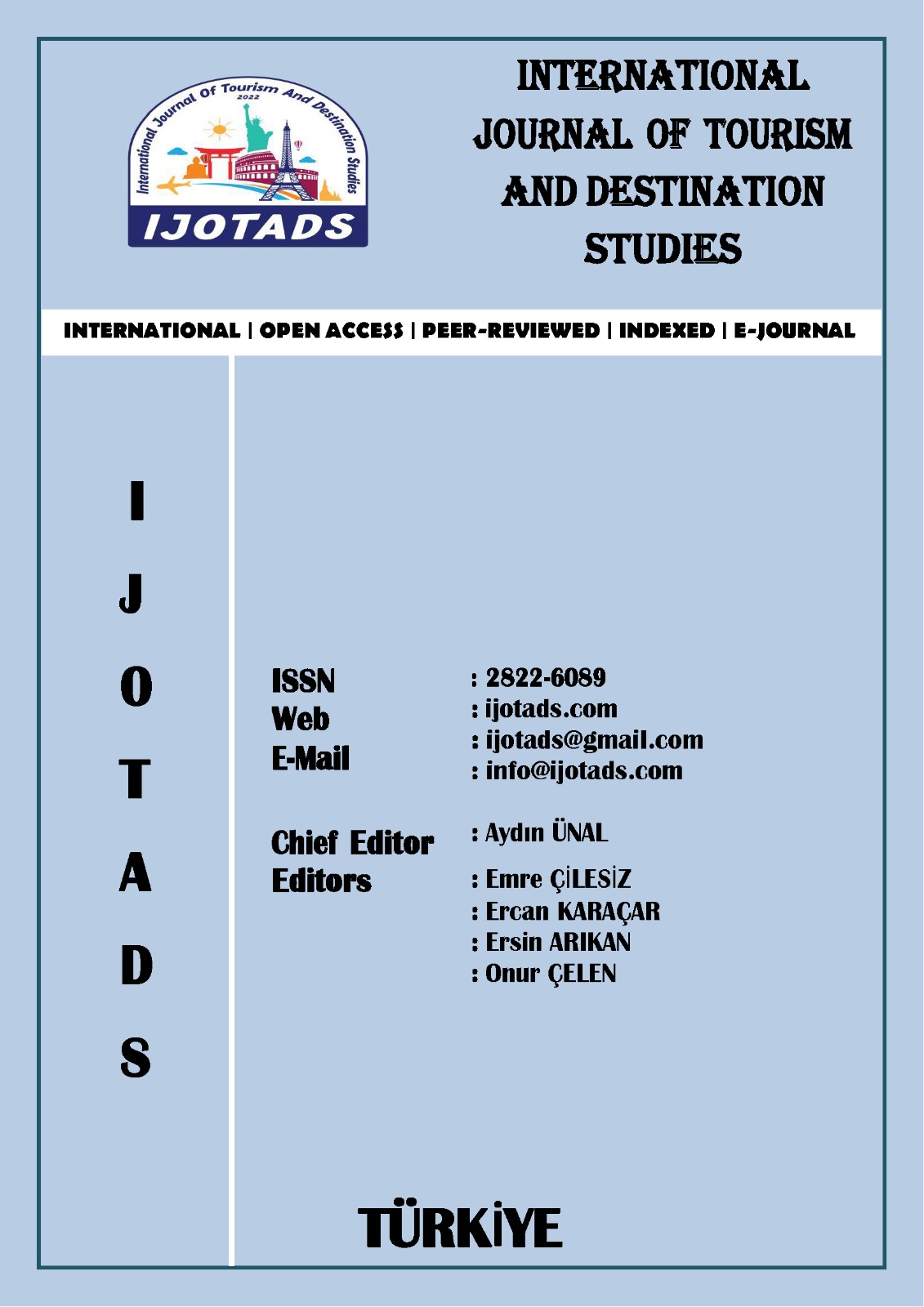Traditional Turkish Cuisine and Water Sustainability: Water Footprint Determination of Geographically Indicated Dishes
Author :
Abstract
In this study, the relationship between traditional Turkish cuisine and water sustainability is examined, with a specific focus on geographically indicated dishes. The primary objective of the research is to reveal the amount of water consumed in food production processes and to emphasize that food waste is not merely an economic loss but also constitutes a waste of limited water resources. In this context, the study analyzes the water required for the cultivation of plant-based and animal-based products used in traditional recipes, thereby drawing attention to the ecological consequences of wasting these products. The research adopts a systematic literature review, a qualitative research method. Within this scope, nearly 500 academic sources and reports were examined, including academic articles, theses, and books published within the last decade, as well as official reports from international organizations such as the Food and Agriculture Organization of the United Nations (FAO). During the data collection process, academic databases such as Google Scholar, Web of Science, and Scopus were utilized, with searches conducted using keywords like "plant water requirements," "food loss," "agricultural water use efficiency," and "water footprint in agriculture." The data obtained were systematically summarized and subjected to comparative analysis to calculate the water footprint of the components in the standard recipes of selected geographically indicated dishes. The findings of the study indicate that traditional Turkish dishes, particularly those containing animal products, have a remarkably high water footprint Accordingly, the production of one serving of "Konya Etliekmek" requires approximately 1,697.35 liters of water. For "Eskişehir Çiğ Börek," the total water footprint for a five-serving portion was calculated to be 95,744.15 liters. In the case of "Antalya Piyazı," despite being predominantly composed of plant-based ingredients, the water footprint for a five-serving recipe was calculated as 16,482.48 liters. These results substantiate that animal products in dishes significantly increase water consumption, whereas plant-based meals have a relatively lower water footprint. Furthermore, the literature review revealed high rates of waste in fresh fruits and vegetables. Each wasted food item signifies the loss of the water expended during its production process. This situation exacerbates the pressure on resources, particularly in water-scarce regions, and threatens the ecosystem balance. In conclusion, this research demonstrates that reducing food waste is a critical strategy for the conservation of water resources.
Keywords
Abstract
Bu çalışmada, geleneksel Türk mutfağının su sürdürülebilirliği ile olan ilişkisi, coğrafi işaretli yemekler özelinde incelenmektedir. Araştırmanın temel amacı, gıda üretim süreçlerinde tüketilen su miktarını ortaya koymak ve gıda israfının yalnızca ekonomik bir kayıp olmadığını, aynı zamanda kısıtlı su kaynaklarının da israfı anlamına geldiğini vurgulamaktır. Bu bağlamda çalışma, geleneksel tariflerde kullanılan bitkisel ve hayvansal ürünlerin yetiştirilmesi için gereken su miktarını analiz ederek, bu ürünlerin israf edilmesinin yol açtığı ekolojik sonuçlara dikkat çekmektedir. Araştırma, nitel bir araştırma türü olan sistematik literatür taraması yöntemini benimsemiştir. Bu kapsamda, toplamda 500’e yakın akademik kaynak ve rapor incelenmiş, son on yıl içerisinde yayımlanmış akademik makaleler, tezler, kitaplar ve Birleşmiş Milletler Gıda ve Tarım Örgütü (FAO) gibi uluslararası kuruluşların resmi raporları gözden geçirilmiştir. Veri toplama sürecinde Google Scholar, Web of Science ve Scopus gibi akademik veri tabanları kullanılarak "bitki su gereksinimleri", "gıda kaybı", "tarımsal su kullanımında verimlilik" ve "tarımda su ayak izi" gibi anahtar kelimelerle taramalar yapılmıştır. Elde edilen veriler, seçilen coğrafi işaretli yemeklerin standart tarifelerindeki bileşenlerin su ayak izini hesaplamak amacıyla sistematik olarak özetlenmiş ve karşılaştırmalı analizlere tabi tutulmuştur. Çalışmanın bulguları, özellikle hayvansal ürünler içeren geleneksel Türk yemeklerinin su ayak izinin oldukça yüksek olduğunu göstermektedir. Analiz edilen üç coğrafi işaretli yemek üzerinden somut sonuçlar elde edilmiştir. Buna göre “Konya Etliekmek” ürününün bir porsiyonunun üretimi için yaklaşık 1.697,35 litre su gerekmektedir. “Eskişehir Çiğ Börek” ürünü için (beş porsiyon) toplam su ayak izi 95.744,15 litre olarak hesaplanmıştır. “Antalya Piyazı” ürünü için, ağırlıklı olarak bitkisel ürünlerden oluşmasına rağmen bu yemeğin beş porsiyonluk tarifinin su ayak izi 16.482,48 litre olarak hesaplanmıştır. Bu sonuçlar, yemeklerdeki hayvansal ürünlerin su tüketimini önemli ölçüde artırdığını, bitki bazlı yemeklerin ise görece daha düşük bir su ayak izine sahip olduğunu kanıtlamaktadır. Ayrıca, literatür taraması taze sebze ve meyvelerdeki israf oranlarının yüksek olduğunu ortaya koymuştur. İsraf edilen her bir gıda ürünü, üretim sürecinde harcanan suyun da boşa gitmesi anlamına gelmekte, bu durum özellikle su kıtlığı yaşanan bölgelerde kaynaklar üzerindeki baskıyı artırmakta ve ekosistem dengesini tehdit etmektedir. Sonuç olarak bu araştırma, gıda israfının azaltılmasının su kaynaklarının korunması için kritik bir strateji olduğunu ortaya koymaktadır.





